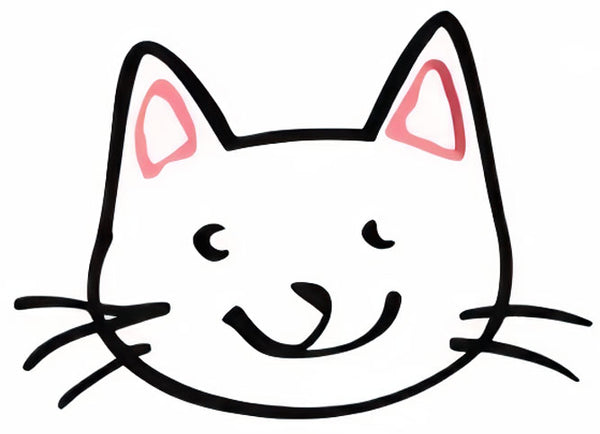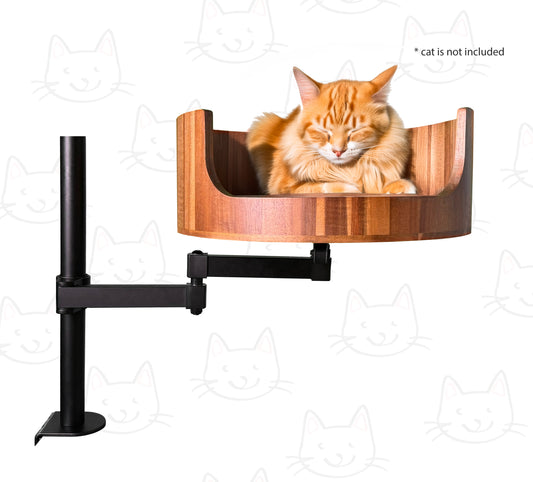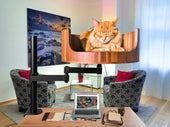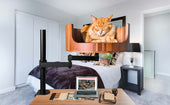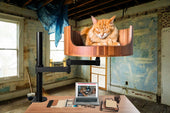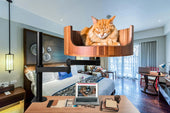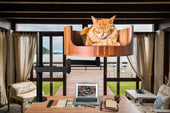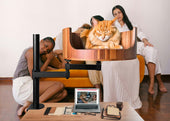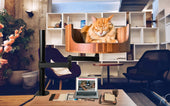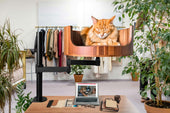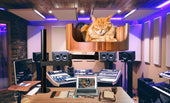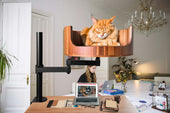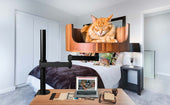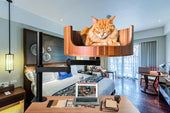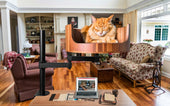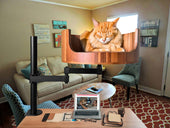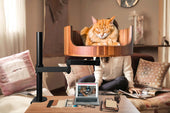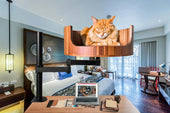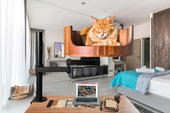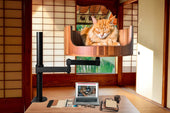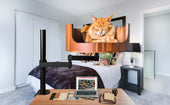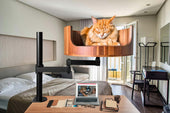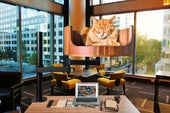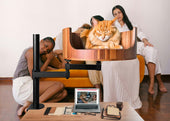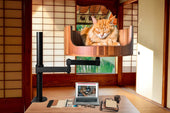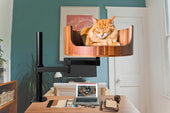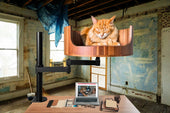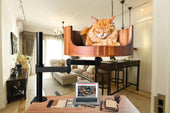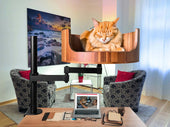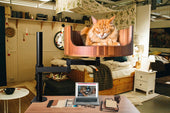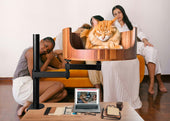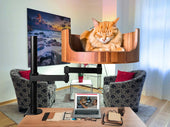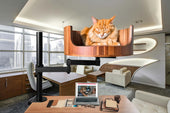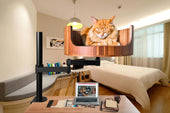
Cat Wags Tail: Understanding Feline Body Language
Share
Desk Cat Nest is a beloved community of feline enthusiasts who have dedicated themselves to understanding the intricacies of cat behavior. One common behavior that often puzzles cat owners is tail wagging. Cats communicate through a variety of body language cues, and tail wagging is a key indicator of a cat's current mood and feelings. In this article, we will delve into the fascinating world of feline body language, with a specific focus on decoding the meaning behind a cat's tail wagging.
From the slow, leisurely swish of a content cat to the rapid flicking of an agitated feline, tail wagging can convey a range of emotions. By observing your cat's body language and tail movements, you can gain insight into their current state of mind and better understand their needs and desires. Whether your cat is showing excitement, fear, or annoyance, their tail can serve as a valuable tool for deciphering their emotions. By honing your ability to interpret your cat's body language, you can strengthen the bond between you and your furry companion, leading to a deeper understanding and more harmonious relationship.
1. Cat tail position is crucial in understanding feline emotions and intentions.
2. A twitching tail may signal agitation or excitement, while a slowly swaying tail could indicate contentment.
3. Pay attention to other body language cues such as ears, eyes, and overall posture to get a complete picture of your cat's mood.
4. Knowing how to interpret your cat's tail movements can help prevent misunderstandings and conflicts.
5. By observing and responding to your cat's body language, you can strengthen your bond and improve communication with your feline companion.
Types of Tail Wagging
Understanding feline body language starts with recognizing the different types of tail wagging. A slow tail swish from side to side typically indicates that the cat is feeling relaxed and content. A faster, more aggressive wag, on the other hand, might signal agitation or frustration. Cats may also hold their tails high and still when feeling confident and in control, or tuck them low and tight when scared or submissive.
Context Matters
It's important to consider the context in which the tail wagging is occurring. For example, if a cat is playfully pouncing on a toy and wagging its tail, it likely means they are excited and having fun. But if the same cat is aggressively swishing its tail while being approached by another animal, it could be a sign of impending aggression. Understanding the overall body language of the cat, as well as the specific situation, can provide valuable clues to their emotional state.
Signs of Stress
In some cases, tail wagging can indicate stress or discomfort in a cat. If a cat's tail is twitching or lashing back and forth rapidly, it may be a sign that they are feeling anxious or threatened. Other signs of stress in conjunction with tail wagging may include dilated pupils, flattened ears, or a tense body posture. It's important to be observant of these cues and respond accordingly to help the cat feel more at ease.
Case Studies
To further illustrate the complexities of feline body language and tail wagging, let's consider a few case studies. In one scenario, a cat named Whiskers was waving her tail slowly while sitting in her favorite sunbeam, indicating relaxation and contentment. In contrast, a second cat, Mittens, was aggressively swishing her tail while being petted by a stranger, signaling discomfort and the need for space. These examples highlight the importance of interpreting tail wagging in conjunction with other body language signals to better understand a cat's emotional state.
Frequently Asked Questions
How can the Desk Cat Nest help with my cat wagging its tail?
The Desk Cat Nest provides a cozy and secure space for your cat to relax and unwind, which can help reduce stress and anxiety that may be causing your cat to wag its tail excessively.
Is the Desk Cat Nest suitable for all cat breeds?
Yes, the Desk Cat Nest is designed to accommodate cats of all breeds and sizes. The spacious and comfortable design is suitable for cats of any shape or size.
How do I introduce my cat to the Desk Cat Nest?
It is best to place the Desk Cat Nest in a quiet and familiar location where your cat likes to spend time. You can entice your cat to explore the nest by placing some of their favorite toys or treats inside.
Can the Desk Cat Nest be easily cleaned?
Yes, the Desk Cat Nest is made with materials that are easy to clean. You can simply wipe down the surface with a damp cloth or vacuum any loose fur that may accumulate inside.
Will my cat become dependent on the Desk Cat Nest?
No, the Desk Cat Nest is meant to be a comforting and relaxing space for your cat to enjoy on their own terms. While they may choose to spend a lot of time in the nest, they will still engage in their usual activities and playtime outside of it.
In conclusion, the Desk Cat Bed is a valuable choice for cat owners looking to address the issue of their feline companion's tail wagging. By providing a comfortable and secure space for cats to rest and relax, this innovative product can help reduce stress and anxiety in cats, ultimately leading to a decrease in excessive tail wagging behavior. With added features such as plush padding and a sturdy design, the Desk Cat Bed offers numerous benefits for both cats and their owners. Invest in a Desk Cat Bed today to create a peaceful and harmonious environment for your beloved pet.
